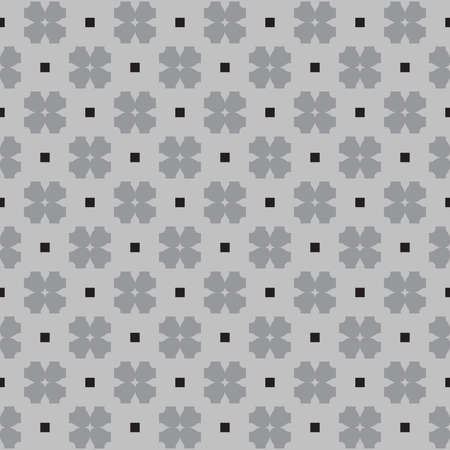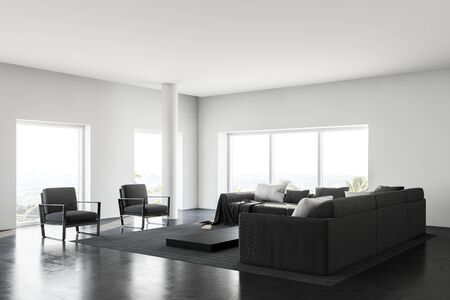A Brief History of Carpet in British Homes
Carpet flooring holds a unique place within the narrative of British interior design, having evolved alongside changing cultural and social landscapes. In the Victorian era, carpets were a symbol of status and comfort, gracing the drawing rooms and parlours of stately homes with intricate patterns and rich textures. The popularity of Axminster and Wilton weaves signified not only luxury but also the embrace of new industrial techniques, making carpet more accessible to the burgeoning middle class. As Britain moved into the mid-20th century, carpet became an essential feature in suburban lounges—offering warmth, acoustic insulation, and a soft underfoot feel that resonated with post-war ideals of domestic cosiness. This journey from opulent hand-crafted rugs to practical wall-to-wall carpeting reflects broader shifts in British tastes, technology, and notions of home life. Today, as we reconsider what defines modern British interiors, the legacy of carpet flooring continues to spark debate: is it a timeless staple or a relic of days gone by?
Cultural Resonance: Carpet as a British Statement
Carpet flooring is more than just a practical choice in British homes; it’s a cultural emblem that weaves together notions of warmth, comfort, and time-honoured tradition. The British affinity for carpets goes beyond their tactile softness underfoot—it is deeply intertwined with national attitudes towards what it means to create a true sense of “home.” In the often unpredictable and chilly climate of the UK, carpets serve as an insulating layer, both physically and psychologically, transforming interiors into havens of cosiness. This association with comfort is not accidental; rather, it is rooted in centuries-old habits where the hearth was the heart of the home, and soft furnishings played a pivotal role in everyday life.
Carpets also function as silent storytellers in British culture. They echo the values of privacy and personal sanctuary, which are significant aspects of British domestic life. Whether in a stately Victorian terrace or a contemporary flat, carpeting signals an invitation to relax and linger—a subtle yet powerful nod to hospitality and family gatherings around the living room. The visual language of carpet patterns, from classic florals to understated neutrals, often reflects generational tastes and regional identities across England, Scotland, Wales, and Northern Ireland.
Carpet Associations in British Interiors
| Aspect | How Carpets Reflect British Culture |
|---|---|
| Warmth | Provides insulation against cold weather; enhances feelings of snugness and security |
| Comfort | Makes spaces inviting for relaxation and socialising; reduces noise and adds softness underfoot |
| Tradition | Connects with historical use in stately homes and cottages alike; preserves a sense of continuity |
| Personal Sanctuary | Marks private zones within the home; reinforces ideas of retreat from the outside world |
Through these layers—literal and metaphorical—carpet flooring remains an unmistakable statement about what it means to dwell well in Britain. It stands as an enduring testament to the value placed on comfort, continuity, and the sanctity of one’s home space within modern British interiors.

3. Material Matters: Modern Innovations and Sustainability
Carpet flooring, once synonymous with traditional British cosiness, has undergone a quiet revolution in recent years. No longer just a symbol of warmth underfoot, todays carpets are at the forefront of innovation, echoing the UK’s growing emphasis on sustainability and responsible consumption. The rise of eco-friendly fibres is a testament to this shift. British homeowners are increasingly drawn to carpets woven from natural materials such as wool, sisal, and jute—fibres that not only reduce environmental impact but also bring a tactile, organic quality into interiors. Furthermore, many brands now offer ranges made with recycled plastics or repurposed textiles, giving new life to discarded materials and supporting the circular economy.
Technological advancements have also played a pivotal role in keeping carpets relevant within modern British homes. Stain-resistant technologies—once a luxury—are now standard in many collections, making carpet flooring more practical for busy households and pet owners alike. These treatments help maintain a pristine look without frequent deep cleaning, aligning well with contemporary lifestyles that value both comfort and convenience.
The interplay between these sustainable innovations and practical enhancements demonstrates how carpet flooring is adapting to the expectations of today’s discerning British consumer. As environmental consciousness becomes embedded in national identity, carpets must do more than simply provide softness; they are now expected to be responsibly sourced, durable, and easy to care for. This evolution invites us to reconsider whether carpet flooring should indeed remain a staple in modern British interiors—and if so, on what terms it continues its legacy.
4. Practical Pros and Cons for the British Homeowner
When considering carpet flooring as a staple in modern British interiors, it’s essential to weigh its practicalities within the unique context of UK homes. The British climate, often damp and chilly, shapes domestic priorities—making insulation and comfort top concerns. Yet, carpets also bring with them considerations around upkeep, health, and durability.
Insulation Against Damp and Cold
Carpets have long been valued in Britain for their insulating properties. Unlike hard floors, a thick carpet provides a tangible barrier against draughts and cold underfoot, contributing to cosier rooms—especially in period properties with less effective insulation. This is not just about warmth; carpets can help reduce heating bills by retaining heat during frosty winters.
Noise Reduction
Another key benefit for the British homeowner is noise absorption. Terraced houses and flats with shared walls or floors can be echo chambers; carpet flooring significantly dampens footsteps, voices, and everyday commotion, fostering a quieter, more private home environment.
Health Considerations: Allergies and Air Quality
However, carpets are not without drawbacks. One major concern is their tendency to trap dust mites, pet dander, and allergens. For families with allergy sufferers or respiratory sensitivities, this can be problematic—even when using high-quality vacuum cleaners. Modern hypoallergenic carpets exist but may come at a premium.
Maintenance and Lifespan
Unlike hard surfaces that wipe clean easily after muddy boots or a spilled cuppa, carpets require regular vacuuming and periodic deep cleaning to maintain appearance and hygiene. Stains can be stubborn; wear patterns may emerge in high-traffic areas. The lifespan of carpet varies greatly depending on quality, fibre type, and household habits.
Quick Comparison: Carpet vs Hard Flooring
| Aspect | Carpet Flooring | Hard Flooring (e.g., wood/laminate) |
|---|---|---|
| Warmth & Insulation | Excellent; retains heat | Poor to moderate; can feel cold |
| Noise Reduction | High; muffles sound | Low; echoes footsteps |
| Allergy Risk | Higher; traps allergens | Lower; easy to clean dust |
| Maintenance Needs | Frequent vacuuming & cleaning required | Easier day-to-day cleaning |
| Lifespan | 5–15 years (varies by quality) | 10–30 years (with care) |
The Bottom Line for UK Homes
The decision to embrace carpet flooring in modern British interiors hinges on balancing these practical pros and cons—considering your property’s age, family needs, lifestyle habits, and of course, your personal aesthetic preferences.
5. Design Trends: Carpet’s Place Amidst Minimalism and Maximalism
In the landscape of contemporary British interiors, two dominant design movements are shaping our homes: pared-back Scandi-inspired minimalism and its expressive counterpart, maximalism. Each trend brings a unique lens to carpet flooring, redefining its role and relevance in modern living spaces across the UK.
Minimalism: Subtle Comfort Meets Sleek Functionality
The minimalist approach, inspired by Nordic sensibilities, has taken root in many British homes over the past decade. Defined by clean lines, muted palettes, and an emphasis on open space, this style initially seems at odds with traditional wall-to-wall carpets. Yet, carpet can harmonise beautifully with minimalism when chosen thoughtfully. Neutral-coloured carpets—think soft greys, gentle taupes, or classic creams—offer warmth underfoot while maintaining a seamless aesthetic. The key is subtlety: low-pile textures and understated patterns ensure carpets don’t dominate but instead quietly enhance the serenity of minimalist schemes. For open-plan flats in London or renovated Victorian terraces in Manchester, a well-chosen carpet provides both physical comfort and acoustic dampening without cluttering visual space.
Maximalism: A Canvas for Personality and Pattern
At the other end of the spectrum, maximalism celebrates abundance—layered textures, bold prints, and a fearless mix of eras and influences. In this context, carpet is far from a background player; it becomes a statement piece. British maximalists often turn to rich jewel-toned velvets or vibrant patterned carpets to anchor eclectic rooms brimming with character. The resurgence of heritage-inspired designs—such as William Morris motifs or tartan patterns—reflects a desire to pay homage to Britain’s decorative history while embracing joyful self-expression. Here, carpet grounds a room’s cacophony of colours and textures, providing cohesion amidst creative chaos.
The British Balancing Act
What sets British interiors apart is their inherent adaptability—a willingness to blend influences old and new. Whether you lean towards minimalist restraint or maximalist exuberance, carpet flooring retains its place as both a practical and stylistic asset. For many UK homeowners, the decision isn’t about choosing one extreme but finding harmony: perhaps a quiet wool loop in bedrooms for calmness and a daring patterned runner on stairs for drama. Ultimately, carpet’s versatility ensures it remains relevant within both current trends—serving as either an unobtrusive foundation or a bold focal point in the ever-evolving tapestry of British interior design.
6. Carpet in the Future of British Interiors
As British interiors continue to evolve, the future of carpet flooring is poised at a fascinating crossroads between tradition and innovation. The open-plan living trend, which has become a hallmark of contemporary UK homes, challenges the classic compartmentalised layouts where wall-to-wall carpeting was once ubiquitous. Instead, carpets are increasingly being used strategically—to delineate zones within expansive living spaces, create pockets of warmth underfoot, or add acoustic comfort in busier communal areas. This modular approach aligns seamlessly with the growing demand for flexible spaces that can shift from home office to playroom or entertaining area at a moment’s notice.
At the same time, shifting attitudes towards comfort and heritage are rekindling appreciation for carpets’ uniquely British legacy. While minimalist hard flooring still dominates glossy design magazines, there’s a renewed interest in tactile textures and layers—a subtle nod to the cosiness of bygone eras. Eco-conscious homeowners are also seeking out sustainable carpet materials such as wool and recycled fibres, reflecting both environmental values and a desire for authentic British craftsmanship.
Looking ahead, carpet’s role may be less about blanket coverage and more about storytelling—using colour, pattern, and texture to express identity and ground evolving interior narratives. Whether it’s a bold geometric runner energising a Victorian terrace hallway or a custom-cut piece softening the acoustics in a modernist flat, carpets have the potential to bridge past and present, merging practical needs with an enduring love for comfort. In this way, rather than fading into obsolescence, carpet could become a key tool in the British designer’s repertoire—flexible enough to adapt to new lifestyles while preserving a sense of homegrown tradition.


